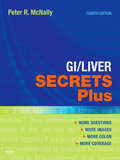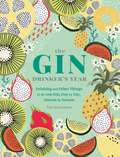- Table View
- List View
GHS label: flammable (UEB Contracted)
by RnibThis is a pictogram used on containers and workplace hazard warnings, meaning contents are flammable. It is from the Globally Harmonized System of Classification and Labelling of Chemicals (GHS), an international system, created by the United Nations. There is a locator dot shown, which will be at the top left of the page when the image is the correct way up. The label comprises of an image of flames rising from a horizontal bar in a red diamond.
GHS label: flammable (UEB Uncontracted)
by RnibThis is a pictogram used on containers and workplace hazard warnings, meaning contents are flammable. It is from the Globally Harmonized System of Classification and Labelling of Chemicals (GHS), an international system, created by the United Nations. There is a locator dot shown, which will be at the top left of the page when the image is the correct way up. The label comprises of an image of flames rising from a horizontal bar in a red diamond.
GHS label: harmful (Large Print)
by RnibThis is a pictogram, used on containers and workplace hazard warnings, meaning contents are harmful. It is from the Globally Harmonized System of Classification and Labelling of Chemicals (GHS), an international system, created by the United Nations. There is a locator dot shown, which will be at the top left of the page when the image is the correct way up. The label comprises of a black print exclamation mark character in a red diamond.
GHS label: harmful (UEB Contracted)
by RnibThis is a pictogram, used on containers and workplace hazard warnings, meaning contents are harmful. It is from the Globally Harmonized System of Classification and Labelling of Chemicals (GHS), an international system, created by the United Nations. There is a locator dot shown, which will be at the top left of the page when the image is the correct way up. The label comprises of a black print exclamation mark character in a red diamond.
GHS label: harmful (UEB Uncontracted)
by RnibThis is a pictogram, used on containers and workplace hazard warnings, meaning contents are harmful. It is from the Globally Harmonized System of Classification and Labelling of Chemicals (GHS), an international system, created by the United Nations. There is a locator dot shown, which will be at the top left of the page when the image is the correct way up. The label comprises of a black print exclamation mark character in a red diamond.
GHS label: hazardous to environment (Large Print)
by RnibThis is a pictogram used on containers and workplace hazard warnings, meaning contents are hazardous to the environment. It is from the Globally Harmonized System of Classification and Labelling of Chemicals (GHS), an international system, created by the United Nations. There is a locator dot shown, which will be at the top left of the page when the image is the correct way up. The label comprises of a dead tree and a dead fish in a red diamond. The tree has bare branches and is in the top left of the diamond. The fish is in the bottom right of the diamond. It is lying on its back with its tail to the left. There is a representation of a patch of land down the page.
GHS label: hazardous to environment (UEB Contracted)
by RnibThis is a pictogram used on containers and workplace hazard warnings, meaning contents are hazardous to the environment. It is from the Globally Harmonized System of Classification and Labelling of Chemicals (GHS), an international system, created by the United Nations. There is a locator dot shown, which will be at the top left of the page when the image is the correct way up. The label comprises of a dead tree and a dead fish in a red diamond. The tree has bare branches and is in the top left of the diamond. The fish is in the bottom right of the diamond. It is lying on its back with its tail to the left. There is a representation of a patch of land down the page.
GHS label: hazardous to environment (UEB Uncontracted)
by RnibThis is a pictogram used on containers and workplace hazard warnings, meaning contents are hazardous to the environment. It is from the Globally Harmonized System of Classification and Labelling of Chemicals (GHS), an international system, created by the United Nations. There is a locator dot shown, which will be at the top left of the page when the image is the correct way up. The label comprises of a dead tree and a dead fish in a red diamond. The tree has bare branches and is in the top left of the diamond. The fish is in the bottom right of the diamond. It is lying on its back with its tail to the left. There is a representation of a patch of land down the page.
GHS label: health hazard (Large Print)
by RnibThis is a pictogram, used on containers and workplace hazard warnings, meaning contents are a health hazard. It is from the Globally Harmonized System of Classification and Labelling of Chemicals (GHS), an international system, created by the United Nations. There is a locator dot shown, which will be at the top left of the page when the image is the correct way up. The label comprises of a person’s head and shoulders with a large six-pointed star shape on the chest and neck. This image is in a red diamond.
GHS label: health hazard (UEB Contracted)
by RnibThis is a pictogram, used on containers and workplace hazard warnings, meaning contents are a health hazard. It is from the Globally Harmonized System of Classification and Labelling of Chemicals (GHS), an international system, created by the United Nations. There is a locator dot shown, which will be at the top left of the page when the image is the correct way up. The label comprises of a person's head and shoulders with a large six-pointed star shape on the chest and neck. This image is in a red diamond.
GHS label: health hazard (UEB Uncontracted)
by RnibThis is a pictogram, used on containers and workplace hazard warnings, meaning contents are a health hazard. It is from the Globally Harmonized System of Classification and Labelling of Chemicals (GHS), an international system, created by the United Nations. There is a locator dot shown, which will be at the top left of the page when the image is the correct way up. The label comprises of a person's head and shoulders with a large six-pointed star shape on the chest and neck. This image is in a red diamond.
GHS label: oxidising (UEB Contracted)
by RnibThis is a pictogram used on containers and workplace hazard warnings, meaning contents are oxidising. It is from the Globally Harmonized System of Classification and Labelling of Chemicals (GHS), an international system, created by the United Nations. There is a locator dot shown, which will be at the top left of the page when the image is the correct way up. The label comprises of a flaming 'O' on a horizontal bar. This image is inside a red diamond.
GHS label: oxidising (UEB Uncontracted)
by RnibThis is a pictogram used on containers and workplace hazard warnings, meaning contents are oxidising. It is from the Globally Harmonized System of Classification and Labelling of Chemicals (GHS), an international system, created by the United Nations. There is a locator dot shown, which will be at the top left of the page when the image is the correct way up. The label comprises of a flaming 'O' on a horizontal bar. This image is inside a red diamond.
GHS label: oxidising (Large Print)
by RnibThis is a pictogram used on containers and workplace hazard warnings, meaning contents are oxidising. It is from the Globally Harmonized System of Classification and Labelling of Chemicals (GHS), an international system, created by the United Nations. There is a locator dot shown, which will be at the top left of the page when the image is the correct way up. The label comprises of a flaming ‘O' on a horizontal bar. This image is inside a red diamond.
GHS label: pressurised gasses (UEB Contracted)
by RnibThis is a pictogram used on containers and workplace hazard warnings, meaning contents are pressurised gasses. It is from the Globally Harmonized System of Classification and Labelling of Chemicals (GHS), an international system, created by the United Nations.. There is a locator dot shown, which will be at the top left of the page when the image is the correct way up. The label comprises of a silhouette of a gas cylinder inside a red diamond. The cylinder points diagonally right with its outlet valve at the right.
GHS label: pressurised gasses (UEB Uncontracted)
by RnibThis is a pictogram used on containers and workplace hazard warnings, meaning contents are pressurised gasses. It is from the Globally Harmonized System of Classification and Labelling of Chemicals (GHS), an international system, created by the United Nations.. There is a locator dot shown, which will be at the top left of the page when the image is the correct way up. The label comprises of a silhouette of a gas cylinder inside a red diamond. The cylinder points diagonally right with its outlet valve at the right.
GHS label: pressurised gasses (Large Print)
by RnibThis is a pictogram used on containers and workplace hazard warnings, meaning contents are pressurised gasses. It is from the Globally Harmonized System of Classification and Labelling of Chemicals (GHS), an international system, created by the United Nations.. There is a locator dot shown, which will be at the top left of the page when the image is the correct way up. The label comprises of a silhouette of a gas cylinder inside a red diamond. The cylinder points diagonally right with its outlet valve at the right.
GHS labels: acutely toxic (Large Print)
by RnibGHS labels: acutely toxic This is a pictogram used on containers and workplace hazard warnings, meaning that contents are acutely toxic. It is from the Globally Harmonized System of Classification and Labelling of Chemicals (GHS), an internationally system, created by the United Nations. There is a locator dot shown, which will be at the top left of the page when the image is the correct way up. The label comprises of a skull and crossbones symbol in a red diamond. The human skull is facing to the front and two eye sockets, a nasal cavity and lower jaw can be found. The crossbones are two human thighbones and are arranged so that they cross each other diagonally. They are partly hidden by the skull.
GHS labels: acutely toxic (UEB Contracted)
by RnibThis is a pictogram used on containers and workplace hazard warnings, meaning that contents are acutely toxic. It is from the Globally Harmonized System of Classification and Labelling of Chemicals (GHS), an internationally system, created by the United Nations. There is a locator dot shown, which will be at the top left of the page when the image is the correct way up. The label comprises of a skull and crossbones symbol in a red diamond. The human skull is facing to the front and two eye sockets, a nasal cavity and lower jaw can be found. The crossbones are two human thighbones and are arranged so that they cross each other diagonally. They are partly hidden by the skull.
GHS labels: acutely toxic (UEB Uncontracted)
by RnibThis is a pictogram used on containers and workplace hazard warnings, meaning that contents are acutely toxic. It is from the Globally Harmonized System of Classification and Labelling of Chemicals (GHS), an internationally system, created by the United Nations. There is a locator dot shown, which will be at the top left of the page when the image is the correct way up. The label comprises of a skull and crossbones symbol in a red diamond. The human skull is facing to the front and two eye sockets, a nasal cavity and lower jaw can be found. The crossbones are two human thighbones and are arranged so that they cross each other diagonally. They are partly hidden by the skull.
GI/Liver Secrets Plus E-Book: Gi/liver Secrets Plus (Secrets)
by Peter R McNallyGI/Liver Secrets Plus, 4th Edition, by Peter R. McNally, DO, FACP, FACG - a volume in the popular Secrets Series® - uses a convenient Q&A approach to provide rapid reference and review of today's most common GI and liver disorders and their management. An expanded size and layout, user-friendly two-color page layout, question-and-answer approach, and list of the "Top 100 GI/Liver Secrets" make it a perfect concise board review tool and a handy clinical reference. Updated coverage throughout equips you with all of the most current and essential knowledge in the field. Uses bulleted lists, tables, boxes, short answers, and a highly detailed index to expedite reference. Includes Key Points and memory aids in each chapter that make it perfect for board review or clinical reference. Covers all of today's most common GI and liver disorders and their management. Features the new "Secrets PLUS" format - with an expanded size and layout, more information, and more visual elements - for easier review and an overall enhanced reference experience. Contains new images and illustrations to provide more detail and offer a clearer picture of what is seen in practice. Incorporates revisions throughout to provide you with an up-to-date overview of gastroenterology and hepatology, including new chapters on Esophageal and Stomach Pathology, Pathology of the Lower GI Tract, Gastroesophageal Reflux and Esophageal Hernias, and Surgery of Achalasia and Esophageal Cancer. Offers reorganized and expanded sections covering the bowels and colon for more specific and easier reference: Small and Large Bowel Disorders; Colon Disorders; and General Symptoms and Conditions.
Gielgud, Olivier, Ashcroft, Dench: Great Shakespeareans: Volume XVI (Great Shakespeareans)
by Russell JacksonGreat Shakespeareans offers a systematic account of those figures who have had the greatest influence on the interpretation, understanding and cultural reception of Shakespeare, both nationally and internationally.In this volume, leading scholars assess the contribution of John Gielgud, Laurence Olivier, Peggy Ashcroft and Judi Dench to the afterlife and reception of Shakespeare and his plays. Each substantial contribution assesses the double impact of Shakespeare on the figure covered and of the figure on the understanding, interpretation and appreciation of Shakespeare, provide a sketch of their subject's intellectual and professional biography and an account of the wider cultural context, including comparison with other figures or works within the same field.
Gielgud, Olivier, Ashcroft, Dench: Great Shakespeareans: Volume XVI (Great Shakespeareans)
by Russell JacksonGreat Shakespeareans offers a systematic account of those figures who have had the greatest influence on the interpretation, understanding and cultural reception of Shakespeare, both nationally and internationally. In this volume, leading scholars assess the contribution of John Gielgud, Laurence Olivier, Peggy Ashcroft and Judi Dench to the afterlife and reception of Shakespeare and his plays. Each substantial contribution assesses the double impact of Shakespeare on the figure covered and of the figure on the understanding, interpretation and appreciation of Shakespeare, provide a sketch of their subject's intellectual and professional biography and an account of the wider cultural context, including comparison with other figures or works within the same field.
Giggle Time - Establishing the Social Connection: A Program to Develop the Communication Skills of Children with Autism
by Susan Aud SondersGiggle Time is a program for parents, teachers and other professionals to help develop the non-verbal, verbal and social reciprocity skills of children with autism. It describes in accessible detail how to communicate with children with autism and gives clear instructions on "how to" techniques for developing language skills.
The Gin Drinker's Year: Drinking and Other Things to Do With Gin; Day by Day, Season by Season
by Tara RichardsonThe Gin Drinker's Year is a day by day, season by season celebration of all things gin. With everything from 150 gin cocktails and gin-infusions, plus 30 delectable gin-spiked food recipes such as Penne alla Gin or Minty G&T Lollies, to heartfelt tributes to Snoop Dogg's 'Gin and Juice', the sozzled wit and wisdom of renowned gin soak Dorothy Parker and the rules of Gin Pong and Ten-Gin Bowling, there's an entry for every day of the year. You'll also discover fascinating snippets of gin-eral knowledge such as the history of vermouth, the Christmas gift that the beefeaters of the Tower of London are given every year, and why you most definitely should be celebrating National Gingerbread Day.So let the festivities be-gin. This is every gin lover's handbook to the best year ever.Highlights include:January - New Year's resolutions, Burns Night, Al Capone and a celeriac gin-fusion.February - Spin the Bottle, National Toast Day, Pancake Day and the Leap Day Cocktail.March - Gin Snap, White Day, St Patrick's Day, Earl Grey and some rather questionable poetry.April - Shakespeare's birthday, National Raisin Day and a Great Gatsby inspired Gin Rickey.May - Dick Bradsell's birthday, a Delft Donkey, a little opera and International Tea Day.June - Strawberry Fields, World Gin Day, Father's Day, a load of cobblers and floral foraging.July - Independence Day, genever, National Pi a Colada Day and garden games.August - Lychees, Dorothy Parker, Ogden Nash, World Oyster Day and Dubonnet.September - Hedgerows, Florida, International Talk Like a Pirate Day and directions to Park LaneOctober -International Gin & Tonic Day, the Beer Flood, spooky concoctions and Sake.November -Albert Camus, National Espresso Day and the anniversary of Casablanca.December - Humphrey Bogart's birthday, Roald Amundsen, Gin Pong and fizzy bubbles.




